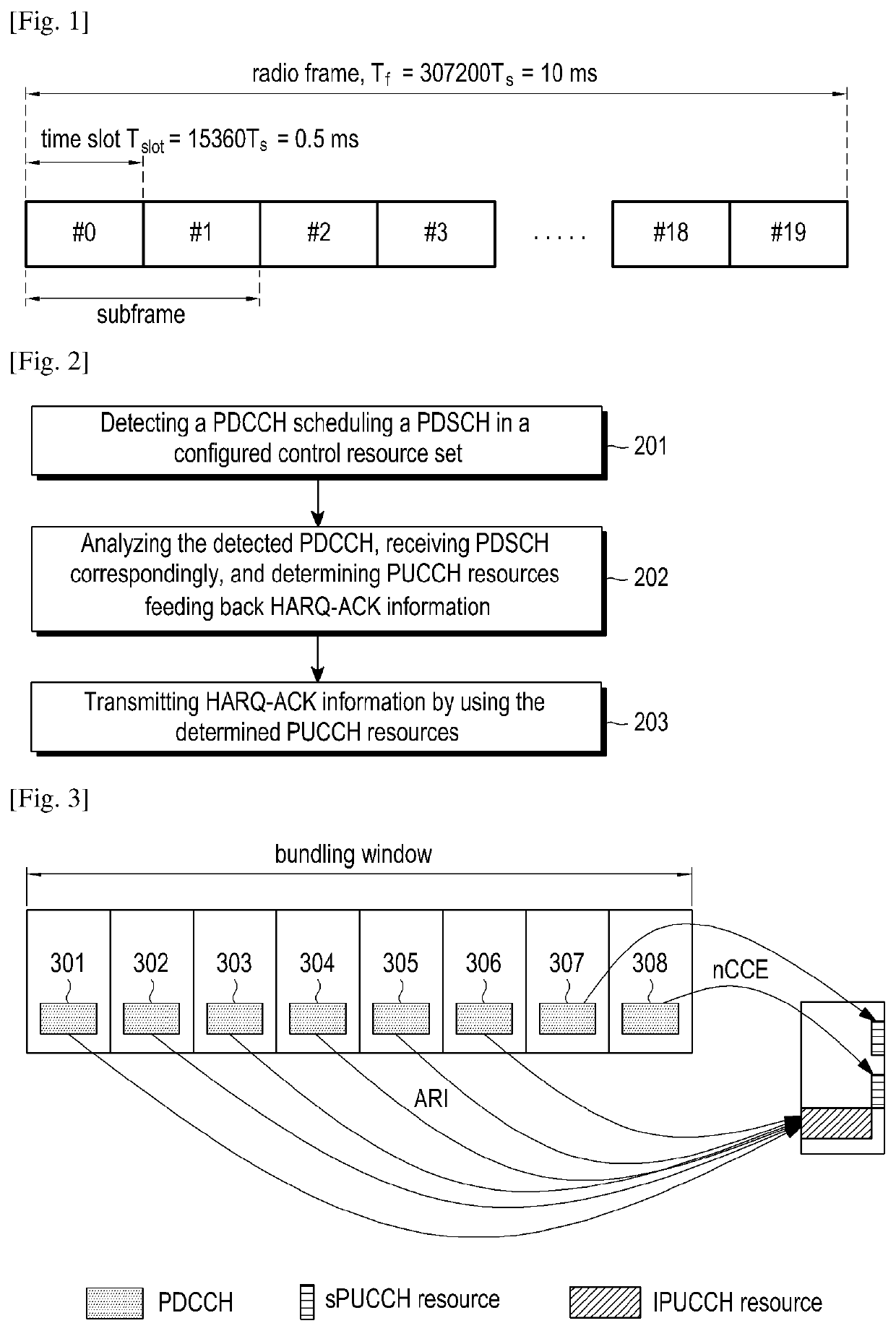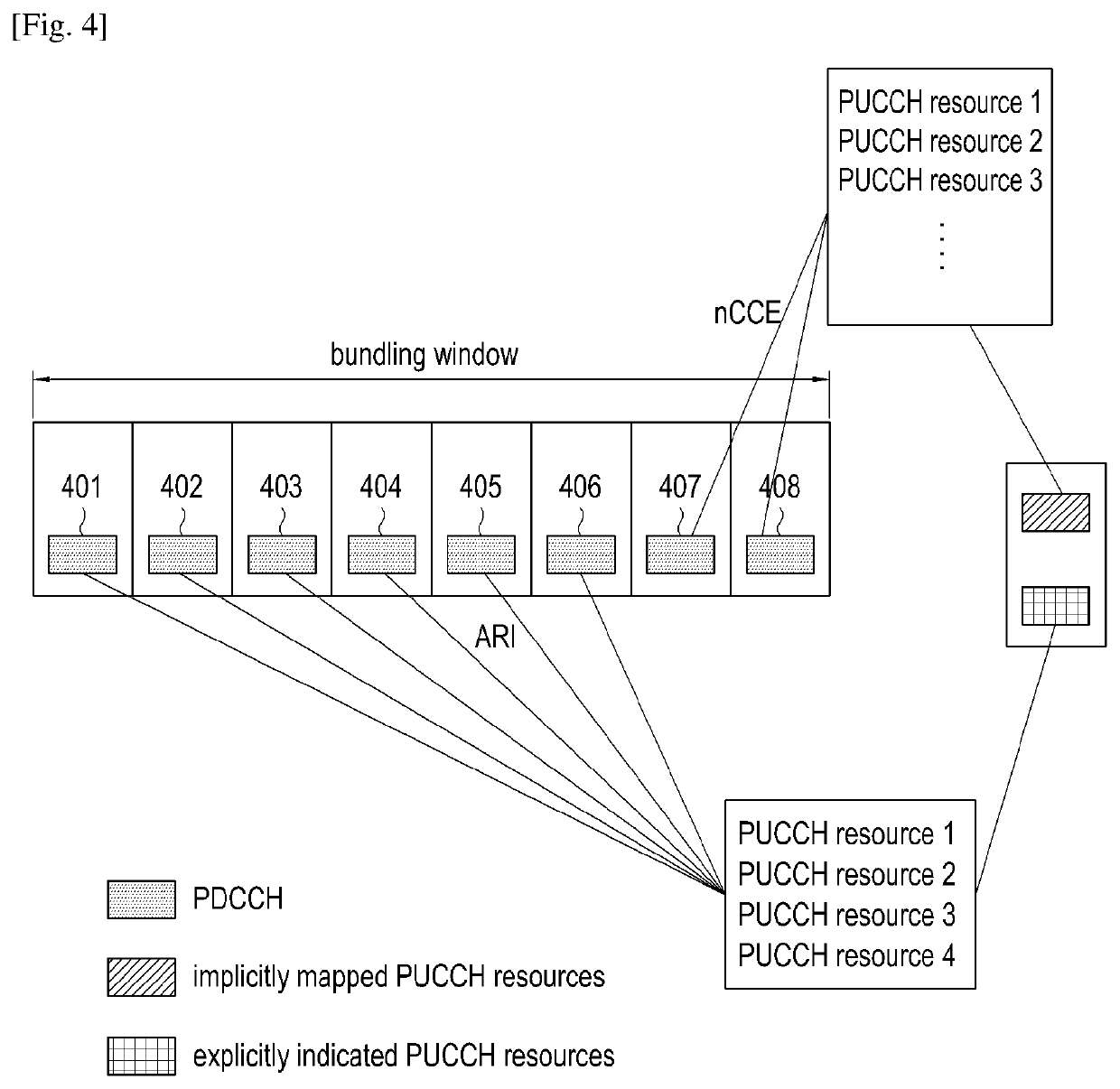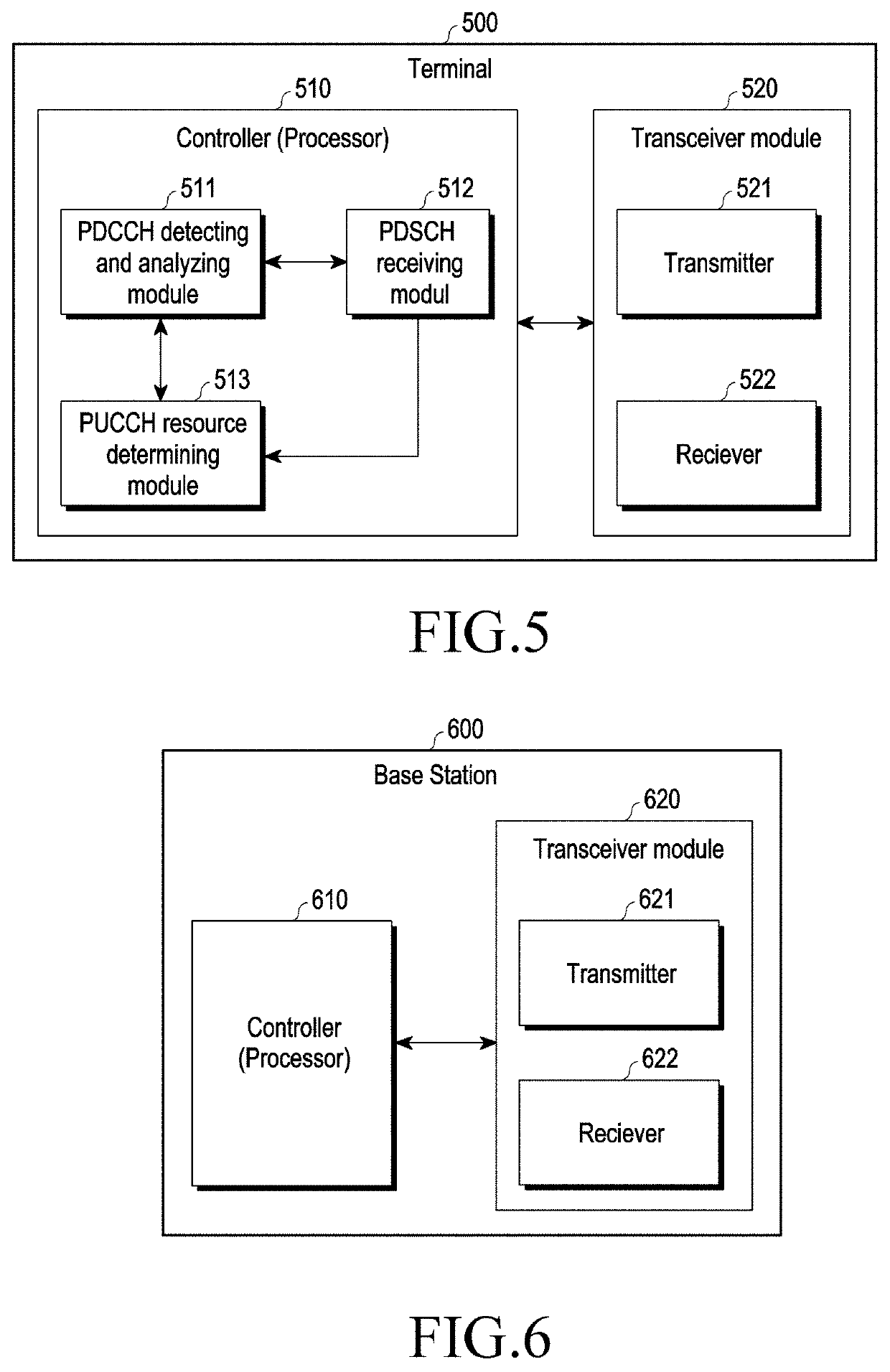Method and device for allocating uplink control channels
a control channel and channel technology, applied in the direction of transmission path sub-channel allocation, transmission path division, wireless communication, etc., can solve the urgent problem of optimizing pdcch information, and achieve the effect of reducing the bit overhead of dci and improving the utilization of upper-limit resources
- Summary
- Abstract
- Description
- Claims
- Application Information
AI Technical Summary
Benefits of technology
Problems solved by technology
Method used
Image
Examples
first embodiment
The First Embodiment
[0090]In downlink control information (DCI) for scheduling a downlink data transmission, information for indicating a HARQ-ACK feedback delay may be included. Within a bundling window (or a binding window), time sequence of downlink TU and / or MTU and feedback delay indicated by transmitted DCI are reversed. For example, denote that an index of a downlink TU located by PDSCH is ti=n−ki, ki∈K, i=0, 1, . . . , M−1, in which the PDSCH feeds back HARQ-ACK information in an uplink TU ‘n’. The ‘K’ is a set of feedback delay. The ‘M’ denotes the number of elements in the set K. Subsequently, when index ‘ti’ of each downlink TU is arranged in an ascending order, corresponding HARQ-ACK feedback delay ‘ki’ is in a descending order. Value range of ki depends on a value range of feedback delay indicated by the DCI. For example, assume that feedback delay adopts 4 bits, which indicate that the feedback delay is 0˜15 TUs, the value range of ki is 0˜15.
[0091]Within one downlink ...
second embodiment
The Second Embodiment
[0094]On the basis of foregoing discussions, PUCCH resources feeding back HARQ-ACK by a UE may be lPUCCH and / or sPUCCH. The lPUCCH may bear more payloads, which may bear HARQ-ACK of PDSCH of multiple downlink TUs and / or MTUs within a bundling window. Generally speaking, HARQ-ACK information of PDSCH with less stringent delay requirements is fed back by lPUCCH. Correspondingly, sPUCCH supports smaller payloads, which generally supports a data transmission with more stringent delay requirements. On the basis of foregoing analysis, lPUCCH and sPUCCH may be differentiated by information indicating HARQ-ACK feedback delay, which is carried by DCI for scheduling downlink data transmission.
[0095]A first method is as follows. For a HARQ-ACK feedback delay ki∈K, in a case, where ki is smaller, e.g., ki≤C, sPUCCH is allocated corresponding to one piece of DCI; otherwise, lPUCCH is allocated corresponding to one piece of DCI. ‘C’ is a predefined constant, or a parameter co...
third embodiment
The Third Embodiment
[0104]For a HARQ-based downlink data transmission, after receiving data from a BS, a UE needs to feed back HARQ-ACK information correspondingly. From one aspect, for some or all the downlink TUs and / or MTUs within a bundling window, it is necessary to implicitly allocate PUCCH resources based on CCE. For example, by adopting the method in the first embodiment, ARO may be used to provide flexibility of resource allocation and compress overheads. From another aspect, in order to support a greater HARQ-ACK payload, PUCCH resources capable of carrying more HARQ-ACK bits may be indicated based on ARI mechanism. That is, N PUCCH resources are configured by a high layer, and one of foregoing N resources may be dynamically indicated by ARI in the PDCCH.
[0105]In order to allocate PUCCH resources, it may be determined to allocate implicit PUCCH resources based on HARQ-ACK feedback delay, or indicate the PUCCH resources by ARI. For ki∈K, in a case where ki is smaller, e.g.,...
PUM
 Login to View More
Login to View More Abstract
Description
Claims
Application Information
 Login to View More
Login to View More - R&D
- Intellectual Property
- Life Sciences
- Materials
- Tech Scout
- Unparalleled Data Quality
- Higher Quality Content
- 60% Fewer Hallucinations
Browse by: Latest US Patents, China's latest patents, Technical Efficacy Thesaurus, Application Domain, Technology Topic, Popular Technical Reports.
© 2025 PatSnap. All rights reserved.Legal|Privacy policy|Modern Slavery Act Transparency Statement|Sitemap|About US| Contact US: help@patsnap.com



